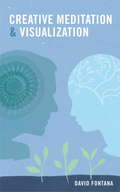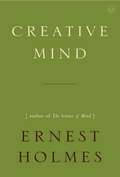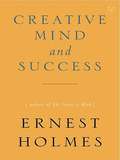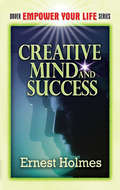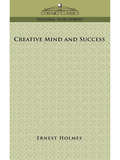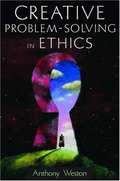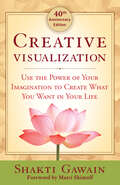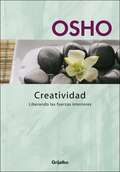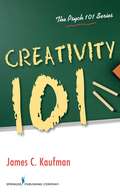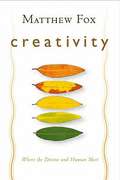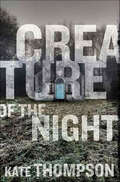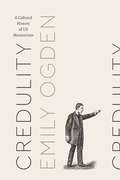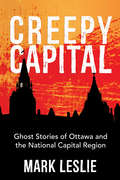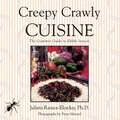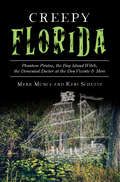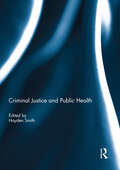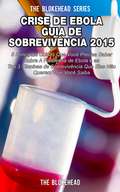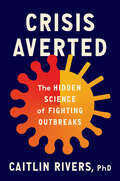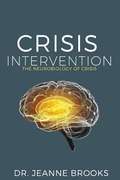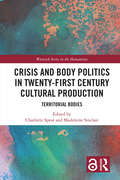- Table View
- List View
Creative Makeup: A step-by-step guide to expressive makeup from fantasy to full illusion
by Rachel DuffyLearn how to create the coolest makeup looks from creative makeup MUA, Rachel Duffy. Choose from 12 key looks covering all the most exciting makeup trends from everyday looks using glitter and crystals, floating eyeliner and neon through to more complex looks for special occasions. This collection of techniques and tutorials will explain everything you need to know about creative makeup whether you are an aspiring MUA, a makeup student or someone who enjoys makeup as a creative outlet. Author and MUA, Rachel Duffy, encourages you to draw on inspiration from life, film and fiction to get creative with makeup. These fundamental techniques will provide you with the skills you need and help you on your way to your specific creative goals. These techniques and tutorials are an ideal learning base for retail or brand artistry, cosplay, theatre, television and film work, special effects and editorial work. There are instructions for all the basic techniques required to get started including how to create the perfect base through to more advanced techniques such as eyebrow blocking which is necessary for the more dramatic and involved looks. There is also advice on colour theory and how to use it when developing characters and creating your own designs. Rachel explains how to create the perfect flawless base on which to build your looks and takes you through the process step-by-step. There is also detailed advice about choosing the right tools and materials that you need in order to get the best results. Once you've got the basics nailed there are 12 incredible looks for you to experiment with all with step-by-step text instructions and photography. These range from 'lighter looks' that can be amped up or toned down, right through to four stunning illusion looks that will completely transform your image and send your social media feed into meltdown. The 12 key looks cover all the important makeup trends including floating eyeliner and neon eyeliner, through to illusion makeup, animal print and much more. Choose your favourite look from: Spotlight Eye; Monochrome Graphic Liner; Ombre Cat Liner; Limelight Deep Smoke; Rainbow Electrica; Sea Siren; Woodland Fae; Celestial Being; Flapper Starlet; Haunted Skull; Space Bot and Circus Horrorshow. Your creative makeup play time starts here - you just have to let your creativity flow!
Creative Meditation & Visualisation
by David FontanaThe powerful combination of meditation and visualization can be harnessed as an extremely effective tool for achieving your goals in whatever sphere you choose.
Creative Mind
by Ernest HolmesThe Pioneering Guide to Success and Self-Mastery Here is the first book by the writer who inspired countless men and women to achieve their greatest potential. It is a simple, straight-to-the-point summary of the principles of affirmative thought that Ernest Holmes made famous in his Science of Mind philosophy. Readers will be unable to look at themselves in the same way after experiencing the potent, overwhelmingly convincing insights and lessons found in this indispensable guide to inner power. "We have within us a power that is greater than anything that we shall ever contact in the outer, a power that can overcome every obstacle in our life and set us sage, satisfied and at peace, healed and prosperous, in a new light, and in a new life." --from Creative Mind
Creative Mind and Success
by Ernest HolmesUse the Practical Power of Creative Thought in Your Life Among Ernest Holmes’s earliest works, Creative Mind and Success is the sage’s consummate guide to the power of positive thought in finance and the workplace, and as a motivating force in living out one’s dreams. "Very deep. ” -Barry Zito, Oakland A’s Pitcher "As we look back, we can take pride that the writings and persona of Dr. Ernest Holmes put him in the forefront of the inspired spiritual leaders of the twentieth century. -Catherine Ponder, author of The Dynamite Laws of Prosperity .
Creative Mind and Success (Dover Empower Your Life Ser.)
by Ernest HolmesDiscover how "right thinking" can help you achieve success!This spirited guide by the founder of the international Religious Science movement will show you how to:• Attain strength and control thought• Attract friends and use the imagination• Achieve independence and prosperitySimple and direct, this manual will help you understand the nature of the universe and the creative power of the mind.
Creative Mind and Success (Dover Empower Your Life Ser.)
by Ernest HolmesEach person is living in a world of his own making, and he should speak only such words and think only such thoughts as he wishes to see manifested in his life. We must not hear, think, speak, read, or listen to limitation of any kind. There is no way under heaven whereby we can think two kinds of thoughts and get only one result; it is impossible, and the sooner we realize it the sooner we shall arrive. -from "How to Attain Strength" New Thought proponents at the turn of the 20th century sought to use mysticism to unleash the forces of the universe in themselves. In this classic Dodd, Mead & Company; New York work, the preeminent metaphysicist of the day-Ernest Holmes, founder of the Institute of Religious Science-shares his spiritual philosophy of positive thinking and his "Law of Mind in Action," which, when used to their full extent, cannot help but bring success and happiness. From his advice on "how to attract friends" to his cautionary explanation of why so many fail, Holmes takes us on what he deems "a delightful spiritual adventure."
Creative Problem-Solving In Ethics
by Anthony WestonA readable and insightful guide to ethical dilemmas.
Creative Visualization: Use the Power of Your Imagination to Create What You Want in Your Life
by Shakti GawainAs introduced by Shakti Gawain to more than seven million readers worldwide, creative visualization is the art of using mental imagery and affirmation to produce positive changes in your life. Gawain’s clear writing style and vivid examples make Creative Visualization easy to read and apply to your personal needs and wants. This groundbreaking work has found enthusiastic followers in every country and language in which it has been published, and Gawain’s simple yet powerful techniques are now used successfully in many diverse fields, including health, education, business, sports, and the creative arts. Whether you read it for general inspiration and empowerment or to achieve specific goals (financial, creative, medical, career, relationship), Creative Visualization remains a profoundly powerful resource from a uniquely warm and wise teacher.
Creative Yoga for Children: Inspiring the Whole Child through Yoga, Songs, Literature, and Games
by Adrienne RawlinsonCreative Yoga for Children offers a simple, ready-to-teach Montessori-based yoga program for children age twelve and under. Following age-appropriate classroom themes, the book's forty detailed, one-hour lessons are designed to supplement any learning environment and are accessible to parents and teachers alike--no special training is required. In a recent study by California State University, Los Angeles, yoga was found to improve students' behavior, physical health, academic performance, and attitudes toward themselves. Research also shows that the benefits of yoga are particularly strong among children with special needs. This book demonstrates how yoga can become a fun daily practice inside or outside the school classroom. Enhanced with over 100 black and white photos, the book's themes, or lessons, are divided by age range (ages four to six, seven to nine, and ten to twelve) and explore topics based on the child's developmental level. For four- to six-year-olds there are twenty hour-long lessons on subjects ranging from colors and the holiday seasons to sounds and words. Ten hour-long lessons for seven- to nine-year-olds introduce such topics as the body, countries of the world, botany, zoology, and the universe. For ten- to twelve-year-olds, ten hour-long lessons cover the environment, geometry, the Earth, fractions, the food chain, and more. Following the structure of a classroom lesson plan, each lesson incorporates elements of yoga including poses, breath work, meditation, and mindfulness. A discussion of the theme and intention of the lesson is followed by a warm-up of yoga poses. The children then engage in a cooperative "connecting" activity designed to bring them together, and a fun and lively theme-oriented activity that involves movement and awareness. The class winds down with breath work, a craft, and often a story. Finally, there is relaxation time and a guided meditation. With this preset structure, the children feel safe while being challenged and inspired. Derived from the educational philosophy of Dr. Maria Montessori and the author's own experience in the classroom and yoga studio, Creative Yoga for Children allows children to move at their own pace and to be free to learn and grow within a non-competitive, nurturing setting. An essential resource for the 4,000 certified Montessori schools in the U.S., this book will appeal to yoga teachers, classroom teachers, parents, and anyone who works with children.From the Trade Paperback edition.
Creatividad
by Osho OshoComo Osho señala en este libro, las personas históricamente creativas se han visto obligadas a rebelarse contra la sociedad. Pero hoy en día esta situación ha cambiado. En el mundo actual a todos se nos exige responder a los desafíos de una forma creativa: desde el más alto ejecutivo hasta el ama de casa tienen que inventar nuevas ideas para enfrentarse a los múltiples contratiempos de la vida moderna. Aquellos que solo utilizan las enseñanzas que han recibido de sus padres para lidiar con los problemas de la vida están en desventaja, tanto en sus relaciones personales como en sus carreras profesionales. Osho muestra en este libro el método para dar el giro desde las actitudes de imitación y limitadas por las reglas, a la innovación y la flexibilidad, que requieren un profundo cambio en nuestra concepción de nosotros mismos y de nuestras capacidades.Creatividad es un manual para todos los que creen necesario ser más creativos, tener más capacidad de jugar y más flexibilidad en sus vidas. Es un manual para aprender fuera de las reglas y también para aprender a vivir con ellas.
Creativity 101 (Psych 101)
by James C. KaufmanCreativity 101, describes the history of how people began to study creativity and discusses different definitions. It explores the "Four P's" (person, process, product, and press).
Creativity: Where The Divine And The Human Meet (Creativity And Journaling Ser.)
by Matthew FoxThe author of Original Blessing explores how the highest communion with the Divine can be found right at our fingertips in the simplest expressions of human creativity. Drawn from a sermon that has electrified listeners, here is a concise, powerful meditation on the nature of creativity from Episcopal priest and radical theologian Matthew Fox. Creativity is Fox at his most dynamic: It is immensely practical and leaves the reader with a message to put into action in life. Fox tantalizingly suggests that the most prayerful, most spiritually powerful act a person can undertake is to create, at his or her own level, with a consciousness of the place from which that gift arises. .
Creature of the Night
by Kate ThompsonA HOUSE WITH A SECRET An unanswered question: Who is the Creature in the Night? Bobby lives a reckless life smoking, drinking, and stealing cars in Dublin. So his mother moves thefamily to the country. But Bobby suspects their cottage might not be as quaint as it seems. Teens will be captivated by this spooky novel about the darkness that lurks in forgotten corners and tough teenagers.
Credulity: A Cultural History of US Mesmerism (Class 200: New Studies in Religion)
by Emily OgdenFrom the 1830s to the Civil War, Americans could be found putting each other into trances for fun and profit in parlors, on stage, and in medical consulting rooms. They were performing mesmerism. Surprisingly central to literature and culture of the period, mesmerism embraced a variety of phenomena, including mind control, spirit travel, and clairvoyance. Although it had been debunked by Benjamin Franklin in late eighteenth-century France, the practice nonetheless enjoyed a decades-long resurgence in the United States. Emily Ogden here offers the first comprehensive account of those boom years. Credulity tells the fascinating story of mesmerism’s spread from the plantations of the French Antilles to the textile factory cities of 1830s New England. As it proliferated along the Eastern seaboard, this occult movement attracted attention from Ralph Waldo Emerson’s circle and ignited the nineteenth-century equivalent of flame wars in the major newspapers. But mesmerism was not simply the last gasp of magic in modern times. Far from being magicians themselves, mesmerists claimed to provide the first rational means of manipulating the credulous human tendencies that had underwritten past superstitions. Now, rather than propping up the powers of oracles and false gods, these tendencies served modern ends such as labor supervision, education, and mediated communication. Neither an atavistic throwback nor a radical alternative, mesmerism was part and parcel of the modern. Credulity offers us a new way of understanding the place of enchantment in secularizing America.
Creepy Capital: Ghost Stories of Ottawa and the National Capital Region
by Mark LeslieA supernatural tour of the Ottawa region with ghostwatcher Mark Leslie as your guide. Come along with paranormal raconteur Mark Leslie as he uncovers first-person accounts of ghostly happenings throughout Ottawa and the surrounding towns — the whole region is rife with ghostly encounters and creepy locales. Discover the doomed financier who may be haunting the Château Laurier. Experience the eerie shadows and sounds at the Bytown Museum. Listen to the echoing howls of former prison inmates at the Nicholas St. Hostel. And feel the bitter sadness of the ghost of Watson’s Mill in Manotick. You’ll marvel at the multitude of ghosts that walk the streets and historic landmarks of Canada’s capital.
Creepy Crawly Cuisine: The Gourmet Guide to Edible Insects
by Julieta Ramos-ElorduyAn introduction to the world of edible insects, complete with recipes and color photographs. Includes an historical look at the use of edible insects in indigenous cultures. Provides information on where to obtain insects and how to store and prepare them. Includes over 60 gourmet recipes, complete with stunning color photographs. The most wholesome source of protein on earth cannot be found in any supermarket in the United States, but it can be found right in your backyard! Insects have been a staple food of almost every indigenous culture, not only because of their delicious flavor but also because they provide a more complete protein than soy, meat, or fish, and are concentrated sources of calcium, niacin, magnesium, potassium, the B-vitamins, and many other nutrients. As the world heads for food shortages in the next century insects can help meet humanity's growing nutritional needs. Creepy Crawly Cuisine tells you everything you need to know to make insects a part of your diet. It includes an overview of the use of edible insects by indigenous cultures, information on where to obtain insects and how to store and prepare them, and over 60 gourmet recipes, complete with stunning color photographs, that let you take the cooking of insects to dazzling culinary heights. As practical as it is unique, Creepy Crawly Cuisine is the ideal gift for followers of the Diet for a Small Planet, adventurous epicures, and cooks who think they have seen it all.
Creepy Florida: Phantom Pirates, the Hog Island Witch, the Demented Doctor at the Don Vicente & More (American Legends Ser.)
by Mark Muncy Kari SchultzThe author of Eerie Florida shares more dark tales from across the Sunshine State in this illustrated guide to local legends and haunted sites. Author Mark Muncy and photographer Kari Schultz have crisscrossed Florida from Key West to the Emerald Coast, hunting down stories of ghosts and reports of paranormal activity. Their previous books, Eerie Florida and Freaky Florida provided armchair explorer and amateur ghost hunters a literal roadmap to the state&’s spookiest sites. Now they present an all-new installment of Florida weirdness in Creepy Florida. Check in at The Biltmore in Coral Gables to spot the ghost of slain Fatty Walsh roaming the thirteenth floor. Sit down for a meal with the spirit of Ethel Allen at Ashley's Restaurant in Rockledge. Visit haunted graveyards, museums, parks and battlefields. Hear macabre stories of spectral pirates, gangsters, witches and madmen. From phantasmagoric packs of Madam McCoy's girls in Pensacola to the ghostly clacking of Hemingway's typewriter in the Keys, Mark Muncy and Kari Schultz lead brave readers along Florida&’s border with the great beyond.
Criminal Justice and Public Health
by Hayden SmithThe criminal justice system now serves as the chief provider of health care services to a significant portion of society. This includes the provision of physical and mental health care for offender populations who require substantial health care resources. To date, little is known or understood with regard to how these services and programs are being delivered. This book addresses the gaps in our knowledge by presenting a range of studies detailing the daily practices that occur in places where criminal justice and public health systems intersect. This includes an assessment of sheriff agency emergency communication systems, a study of problem behaviours and health using a juvenile sample, the challenge of treating mentally ill prison inmates with note of important gender differences, the impact of case management on justice systems, and a review of substance abuse cessation programs among pregnant women currently serving probation and parole sentences. Also included is a policy piece in which the authors call for an integrated model that is neither criminological nor public health specific. These readings provide a range of empirical examples that highlight important successes and challenges facing the criminal justice and public health systems. They suggest that integration and partnerships represent the most efficacious means to reduce critical social problems such as violence, poor health, and criminality. This book was originally published as a special issue of Criminal Justice Studies.
Criminal Law, Philosophy and Public Health Practice
by John Coggon A. M. Viens A. M. Viens John Coggon Anthony S. KesselThe goal of improving public health involves the use of different tools, with the law being one way to influence the activities of institutions and individuals. Of the regulatory mechanisms afforded by law to achieve this end, criminal law remains a perennial mechanism to delimit the scope of individual and group conduct. Utilising criminal law may promote or hinder public health goals, and its use raises a number of complex questions that merit exploration. This examination of the interface between criminal law and public health brings together international experts from a variety of disciplines, including law, criminology, public health, philosophy and health policy, in order to examine the theoretical and practical implications of using criminal law to improve public health.
Crise Económica: Sistema Alimentar Mundial – A Batalha contra a Pobreza, a Poluição e a Corrupção
by Amanda Eliza Bertha Adelaide Franco NikolicO sistema alimentar mundial está em sério risco. As pessoas estão a morrer à fome porque a sua comida está a ser acumulada, vendida a outros países ou não está, simplesmente, a ser produzida. Este livro aborda a crise económica, dando especial atenção ao sistema alimentar mundial.
Crise de Ebola - Guia de Sobrevivência 2015
by The BlokeheadQuando se trata de notícias sobre o vírus Ebola, muitas pessoas tornaram-se extremamente amedontradas de que o país está lidando com uma epidemia de Ebola em oposição a vários casos isolados de Ebola. Na verdade, muitas pessoas temem que uma pandemia de Ebola em todo o mundo esteja prestes a acontecer. Como resultado, as pessoas estão se voltando para praticamente qualquer via possível para encontrar mais informações sobre o que eles precisam fazer para proteger a si e seus entes queridos. Este guia de sobrevivência de sete partes de Ebola pode ajudá-lo a aprender as coisas que você precisa saber sobre a doença e o que fazer, a fim de proteger a si e sua família.
Crisis Averted: The Hidden Science of Fighting Outbreaks
by Caitlin Rivers&“[An] ambitious and... successful attempt to reset our relationship with the field of public health. With a judicious blend of candor, hopefulness and pragmatism, [Rivers] calls out its mistakes, reminds us of its historic accomplishments and emphasizes the need for the discipline to adjust its strategies if its full promise is to be realized.&”—Wall Street Journal"A master class in how we can pinpoint and prevent health crises before they spiral out of control."—Scott Gottlieb, MD, author of Uncontrolled SpreadA fascinating window into the secret life of epidemiology, weaving together stories of triumph and tragedy, with a boots-on-the-ground perspective on how we can avert the next public health crisisThere are few visible markers of the accomplishments of public health. When epidemiologists do their jobs, nothing happens. An outbreak does not grow into an epidemic. A child does not go hungry. A would-be smoker never lights up. In this fascinating window into the secret life of public health, Caitlin Rivers weaves together stories of triumph and tragedy to show that by making sure things don't happen, she and legions of scientists, practitioners, and policymakers change the course of history.We have many of the tools and experiences needed to prevent the next crisis, but as past experiences teach us, the unexpected is always around the corner. We cannot afford complacency, as countless challenges remain, including constantly emerging pathogens, the rapid growth of biotechnology, and the inconsistent cycles of funding for public health programs. Progress can be slow, but the unsung heroes in epidemiology remain focused on their missions. Crisis Averted tells their stories—from the eradication of smallpox in the twentieth century to a battle against mosquito-borne diseases in the Florida Keys to the international safeguards implemented against extraterrestrial germs. By taking a candid look at how we solve problems in public health, Caitlin Rivers illuminates the role of epidemiology in all our lives and lays out the case for what can be accomplished given sufficient vision, leadership, and resources. Crisis Averted is an inspiring and galvanizing call for us to work together towards a healthier, more resilient future.
Crisis Intervention: The Neurobiology Of Crisis
by Jeanne BrooksThis manual is meant to help people through crisis. The author has worked in the mental health field for over thirty years with a specialty in crisis and for the last ten years, she has been training counseling students in crisis intervention. Natural disasters, mass shootings, refugee crises, human sex trafficking, etc. show the growing need for individuals to be prepared to sit with others in their suffering. The need is growing, yet the workers are few. The author has recognized that more and more organizations, disciplines, and ministries are doing crisis intervention with little to no knowledge or understanding of the effects that working with people in crisis has on the crisis worker. This manual will help gain a better understanding of how trauma effects an individual, as well as how working with people in crisis can affect the interventionist. This information can help work more effectively by training the team members in self-sustainment. This Christian perspective of intervention will help crisis interventionist and the agency become more Christ-like in their approach by instilling a confidence and hope in the most horrific of circumstances, while still maintaining strong faith in the goodness of God. The preventative practices provided in this manual will help prevent burnout, compassion fatigue and vicarious trauma for crisis interventionist.
Crisis and Body Politics in Twenty-First Century Cultural Production: Territorial Bodies (Warwick Series in the Humanities)
by Charlotte Spear Madeleine SinclairThe twenty-first century has been deemed the “Age of Crisis”. We are witnessing the catastrophic unfolding of environmental crisis, financial crisis, pandemic and conflict. But are we to understand these crises as new phenomena? Is their seemingly simultaneous existence purely coincidental? Or rather do they instead form part of a singular, historically produced, unfolding crisis, which only today has reached a generalised consciousness? And perhaps most urgently, how far can we separate the crises of human experience from those exacted upon the land?The chapters collected in Crisis and Body Politics in Twenty-First Century Cultural Production: Territorial Bodies deploy the framework of “Territorial Bodies” to address urgent social, ecological and political challenges. Examining themes such as (inter)national bodily governance, racialised bodies, eco-feminist movements, spatial justice and bodily displacement, this collection provides a deeper analysis of the interconnected forms of violence perpetrated against marginalised human and non-human bodies, taking this combined violence as the defining feature of contemporary crisis.

